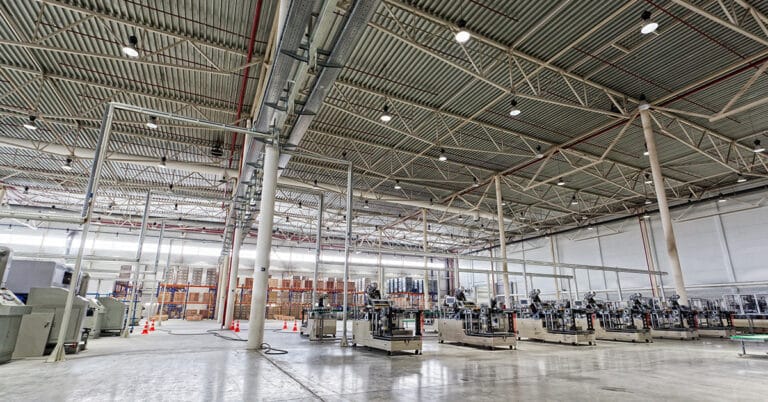Like other types of companies, manufacturers have entered a new era — one in which paying attention to sustainability and implementing initiatives to achieve it are no longer optional, but essential. As global pressures mount and stakeholders demand greater accountability, sustainability reporting in manufacturing also has become a strategic priority. So, what does sustainability reporting entail, and why is there a growing emphasis on transparency and reporting?
At its core, sustainability reporting is about disclosing a company’s environmental, social, and governance (ESG) performance. It transforms well-meaning commitments into quantifiable data that stakeholders can analyze and trust. In the manufacturing sector — which historically has been associated with high carbon emissions and resource consumption — sustainability reporting holds even greater significance.
Who cares about these reports? Just about everyone: investors, regulators, customers, employees, and the communities companies operate in. These groups are increasingly interested in how manufacturers are reducing their environmental impact, improving workplace practices, and operating transparently. Companies that ignore corporate sustainability reporting risk falling behind — not just in compliance, but in market competitiveness.
ESG expectations are rising
Expectations around ESG in manufacturing are expanding on multiple fronts. Investors are using ESG metrics to evaluate financial risk and resilience. Governments are tightening disclosure mandates. Customers, especially B2B buyers with their own stakeholders to answer to, are vetting supply chains for alignment with their sustainability goals.
Sustainability transparency doesn’t just appease regulators; it fosters trust with clients and communities, and it strengthens bids for ESG-sensitive contracts. Reporting makes sustainability efforts tangible by providing measurable, auditable results that reflect real progress.
What goes into a sustainability report?
A robust sustainability report covers a broad spectrum of topics, but generally follows a three-part structure reflecting ESG principles:
Environmental metrics
These include:
- Carbon emissions tracking (Scope 1, 2, and increasingly 3)
- Energy consumption and efficiency
- Waste generation and recycling rates
- Water usage and conservation strategies
- Resource efficiency and circularity
Net zero manufacturing targets often fall within this category and are backed by year-over-year comparisons.
Social metrics
Key areas here include:
- Workplace safety and incident tracking
- Labor practices and DEI (diversity, equity, and inclusion)
- Employee well-being and training
- Community engagement initiatives
Corporate social responsibility and social impact can be harder to quantify, but they are a vital part of any credible sustainability strategy.
Governance metrics
Often overlooked, governance includes:
- Legal and regulatory compliance
- Ethical operations
- Anti-corruption measures
- Executive-level oversight and ESG accountability
To guide these disclosures, manufacturers can look to standards from the Global Reporting Initiative, the Sustainability Accounting Standards Board, and the Task Force on Climate-Related Financial Disclosures. The emerging International Sustainability Standards Board is also shaping global frameworks.
The role of data in effective reporting
Data is the backbone of any credible sustainability reporting program. Without reliable data, tracking progress, benchmarking against peers, or demonstrating compliance becomes nearly impossible. However, there are key data challenges that need to be met, and manufacturers face a unique set of obstacles:
- Disparate systems that don’t “talk” to each other
- Inconsistent tracking methods across facilities
- Limited visibility into outsourced or third-party operations
- Manual data collection that’s time-consuming and error-prone
Yet, modern operations offer significant opportunities for data-driven manufacturing. IIoT sensors, smart meters, and machine-level analytics can continuously monitor:
- Electricity and gas usage
- Emissions levels
- Downtime and cycle efficiency
Centralizing this information through dashboards or ERP software allows teams to validate, standardize, and act on their sustainability performance data.
Maintenance’s role in sustainability reporting
Maintenance teams are unsung heroes in the sustainability-in-production journey. Their daily activities affect asset longevity, energy consumption, and emissions. Consider, for example, predictive maintenance and KPIs. Predictive maintenance solutions reduce unplanned downtime, extend equipment life, and lower energy waste. These benefits translate into measurable gains in efficiency and sustainability. And through CMMS (Computerized Maintenance Management Systems), manufacturers can:
- Log equipment uptime and downtime
- Track water, lubricant, and energy use
- Record emissions from leaky valves or inefficient motors
- Report chemical safety practices
These records are a gold mine for environmental reporting and provide tangible proof of ongoing sustainability initiatives.
Digital tools that support sustainability reporting
To streamline reporting, manufacturers are increasingly investing in automation and analytics platforms. Here are some key technologies:
- CMMS platforms that track asset usage, maintenance logs, and resource consumption
- IIoT systems that gather real-time environmental and operational data
- Cloud dashboards for centralized KPI monitoring and visualization
- Integrations with ERP software and ESG tools for seamless data flow
These systems not only automate routine tracking but also help organizations meet sustainability reporting standards more efficiently and accurately.
Common challenges in ESG reporting and how to overcome them
Even with the right intentions, many manufacturers struggle to implement strong reporting programs.
Top obstacles:
- Data silos: When departments operate in isolation, it’s hard to create a unified view of sustainability metrics.
- Inconsistent standards: Without agreed-upon KPIs and frameworks, reporting lacks consistency and comparability.
- Internal skill gaps: Many facilities lack dedicated ESG experts or reporting officers.
- Transparency hesitancy: Some fear that publishing “bad” data could hurt reputation.
How to address them
- Hire or appoint sustainability officers to coordinate ESG strategy and reporting.
- Conduct third-party audits to validate metrics and uncover blind spots.
- Partner with service providers such as ATS to collect, standardize, and analyze operational data, contributing to corporate sustainability storytelling that is both accurate and compelling.
Benefits of proactive sustainability reporting
Publishing regular reports isn’t just about avoiding penalties. It’s a way to drive real business value. Some key advantages include:
- Build trust: Customers and investors appreciate transparency and social responsibility.
- Brand value: Position your company as a forward-thinking, responsible manufacturer.
- Financial incentives: Open doors to tax breaks, government grants, and green procurement programs.
- Operational efficiency: Uncover inefficiencies that, when corrected, yield long-term cost savings.
In the world of smart manufacturing, good ESG practices are often synonymous with operational excellence.
Making sustainability reports a competitive advantage
So, where should manufacturers begin? The path forward:
- Audit your data: Identify gaps, silos, and overlaps in how you track and store sustainability-related information.
- Invest in technology: Implement or enhance CMMS, ERP, and IIoT platforms for reliable, real-time data collection.
- Collaborate with experts: ATS supports manufacturers in enhancing sustainability through a combination of maintenance expertise, technology integration, and process optimization.
- Lead through transparency: ESG reporting isn’t just about compliance. It’s a platform to demonstrate leadership, innovation, and accountability.
As the industry evolves, companies that prioritize sustainable manufacturing and reporting on their progress are better positioned when it comes to winning contracts, improving margins, and building resilient, future-ready operations.






